Its walls are padded in lurid pink velvet while the room boasts vases of plastic roses, mini candelabra and a drinks cabinet. But this isn't a love motel room, it's a car -- a "lowrider."
Hundreds of the customized vehicles -- most sporting velvet swivel seats and interiors dotted with disco mirrors and bodies adorned with bright colors and suggestive murals -- crowded into a Los Angeles stadium last weekend.
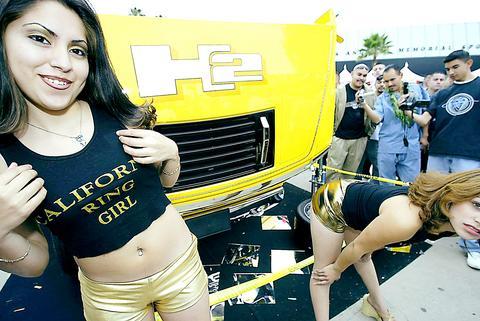
The four-decade-old lowriding phenomenon -- which began in the Rebel Without a Cause era of late 1950s America -- is picking up speed again with a new generation of mainly Latino fans who have turned their passion into a new sub-culture that worships the glitzy vehicles.
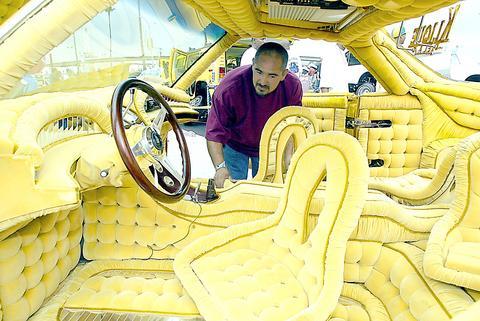
In car-bound Los Angeles, the lowrider culture of the Grease generation has been taken over and personalized by the city's huge Mexican population who invest their aspirations, fantasies -- and a lot of money and time -- in their eye-catching assets.
"For lowriders, their cars are their babies and tell their life stories and depict their dreams," said Greg DeAlba, a 24-year-old Angeleno of Mexican descent who is the second generation of a rare family dynasty of lowriders.
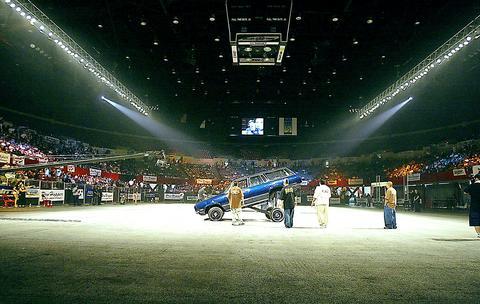
"To us, its art, like painting or drawing," he said pointing to his pristine purple 1958 Chevrolet station wagon that boasts gleaming chrome trim and engine and a portrait of his new wife under its mirror-lined bonnet.
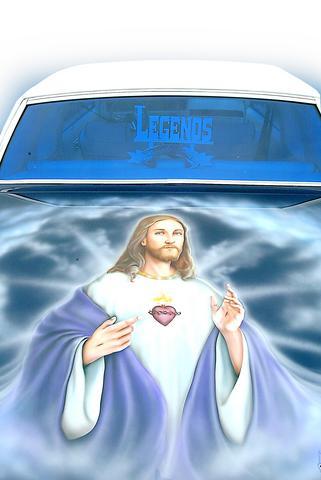
"We build these cars with our hands and put our souls into them."
And every possible personal expression is in evidence at gatherings of lowriders, who transform cheap and rickety jalopies into shiny status symbols and objects of desire.
In a potent mixture of machinery and sexual innuendo, lowriders strut their stuff in cars that generally feature a scantily-clad woman in a suggestive pose on the bodywork and interiors worthy of a rolling boudoir.
Car murals depict their owners' dreams, hobbies or professions: dollar bills, drug motifs or -- in the case of one auto body painter -- a bikini-clad woman brandishing a pair of spray-paint guns.
In addition to sporting traffic-stopping paintwork and upholstery, some lowriders can also "hop" up to 1.57m into the air on their rear wheels, bounce from side to side on their customized hydraulic suspensions or hit speeds of 200kph.
Lowriders, named for the vehicles' low profiles, started out simply as cars with dropped suspensions but have evolved into fantasies on wheels.
"When I got my first lowrider in 1959, I had to load the back with sandbags to bring it closer to the ground," said lowrider family patriarch Mario DeAlba, 57.
"Now you can make them do anything," he said pointing to his deep red 1960 Chevrolet Impala on which he has spent more than US$30,000 in the past four years.
All this for vehicles that are banned from public roads and are used simply as icons to be shown off to admiring fans at lowrider shows.
Over the years, DeAlba, who lives in a modest home east of Los Angeles, has spent hundreds of thousands of dollars on stripping and converting 50 to 60 cars.
Between them, the auto bodyshop owner and his four sons, have eight lowriders, some 1950s and 1960s classic and others newer 1990s cars.
"It's like a drug," he said. "You think you'll only do a couple of things to it and then you find you can't stop.
"But I'm so proud that my sons have all inherited my passion because I have accomplished so much more than I could have dreamed as a young immigrant."
Even a third generation of the family has inherited the lowrider bug: DeAlba's seven-month-old grandson is pushed around the Lowrider Experience show in a custom-made lowrider stroller.
"We all go to the shows with our cars, so my son needed to have a vehicle of his own," said doting dad Greg the shiny green metallic paint and chrome baby-mobile.
Lowrider Experience organizer Alberto Lopez said the lowrider sub-culture is growing, both here and abroad, including in Japan where enthusiasts have their own monthly magazine and import old US cars to convert.
"This was once a very Chicano (Mexican American) activity but has grown into a cross-cultural phenomenon," said event organizer Lopez who is seen as the patriarch of the lowrider movement.
But the movement, which is divided into clubs with names such as Klique and Aftermath that lend members a group identity in their adopted country, has not been free of controversy.
Some claim that it is linked to gangland culture, a claim that DeAlba and Lopez deny.
"The key ingredient of low-rider culture is that they're so cool," said Lopez.
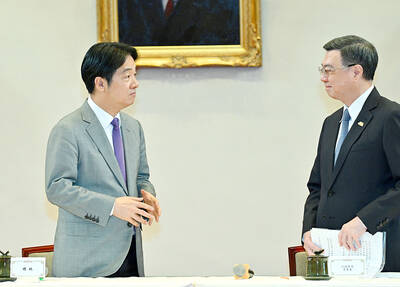
Under pressure, President William Lai (賴清德) has enacted his first cabinet reshuffle. Whether it will be enough to staunch the bleeding remains to be seen. Cabinet members in the Executive Yuan almost always end up as sacrificial lambs, especially those appointed early in a president’s term. When presidents are under pressure, the cabinet is reshuffled. This is not unique to any party or president; this is the custom. This is the case in many democracies, especially parliamentary ones. In Taiwan, constitutionally the president presides over the heads of the five branches of government, each of which is confusingly translated as “president”

Sept. 1 to Sept. 7 In 1899, Kozaburo Hirai became the first documented Japanese to wed a Taiwanese under colonial rule. The soldier was partly motivated by the government’s policy of assimilating the Taiwanese population through intermarriage. While his friends and family disapproved and even mocked him, the marriage endured. By 1930, when his story appeared in Tales of Virtuous Deeds in Taiwan, Hirai had settled in his wife’s rural Changhua hometown, farming the land and integrating into local society. Similarly, Aiko Fujii, who married into the prominent Wufeng Lin Family (霧峰林家) in 1927, quickly learned Hoklo (commonly known as Taiwanese) and

The Venice Film Festival kicked off with the world premiere of Paolo Sorrentino’s La Grazia Wednesday night on the Lido. The opening ceremony of the festival also saw Francis Ford Coppola presenting filmmaker Werner Herzog with a lifetime achievement prize. The 82nd edition of the glamorous international film festival is playing host to many Hollywood stars, including George Clooney, Julia Roberts and Dwayne Johnson, and famed auteurs, from Guillermo del Toro to Kathryn Bigelow, who all have films debuting over the next 10 days. The conflict in Gaza has also already been an everpresent topic both outside the festival’s walls, where

The low voter turnout for the referendum on Aug. 23 shows that many Taiwanese are apathetic about nuclear energy, but there are long-term energy stakes involved that the public needs to grasp Taiwan faces an energy trilemma: soaring AI-driven demand, pressure to cut carbon and reliance on fragile fuel imports. But the nuclear referendum on Aug. 23 showed how little this registered with voters, many of whom neither see the long game nor grasp the stakes. Volunteer referendum worker Vivian Chen (陳薇安) put it bluntly: “I’ve seen many people asking what they’re voting for when they arrive to vote. They cast their vote without even doing any research.” Imagine Taiwanese voters invited to a poker table. The bet looked simple — yes or no — yet most never showed. More than two-thirds of those